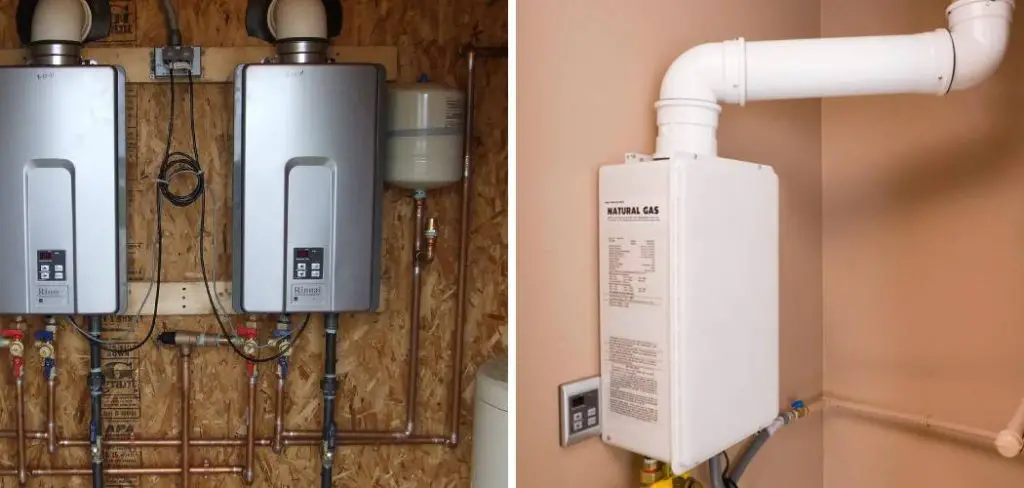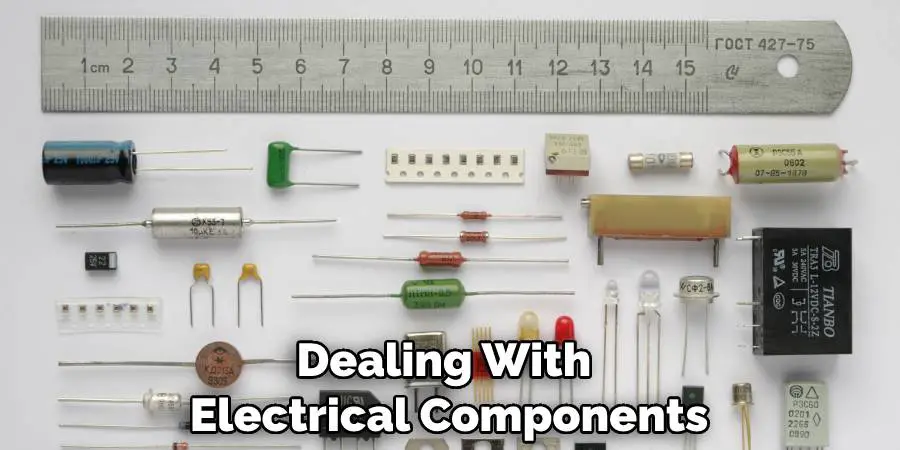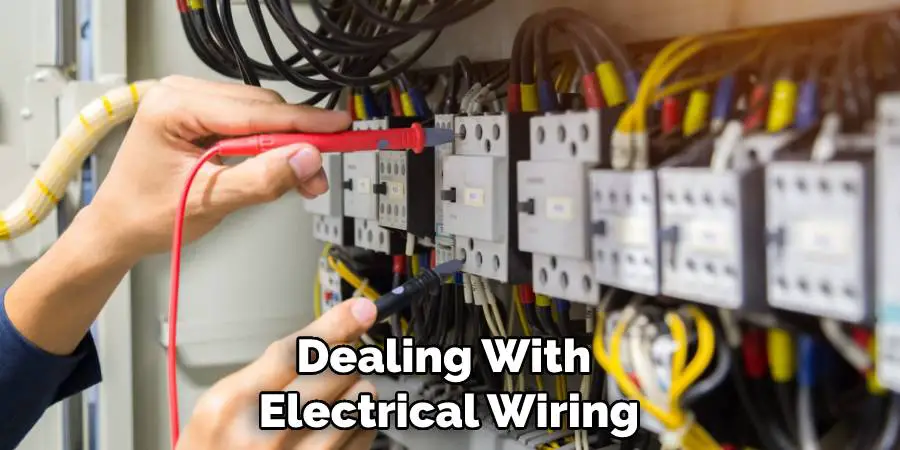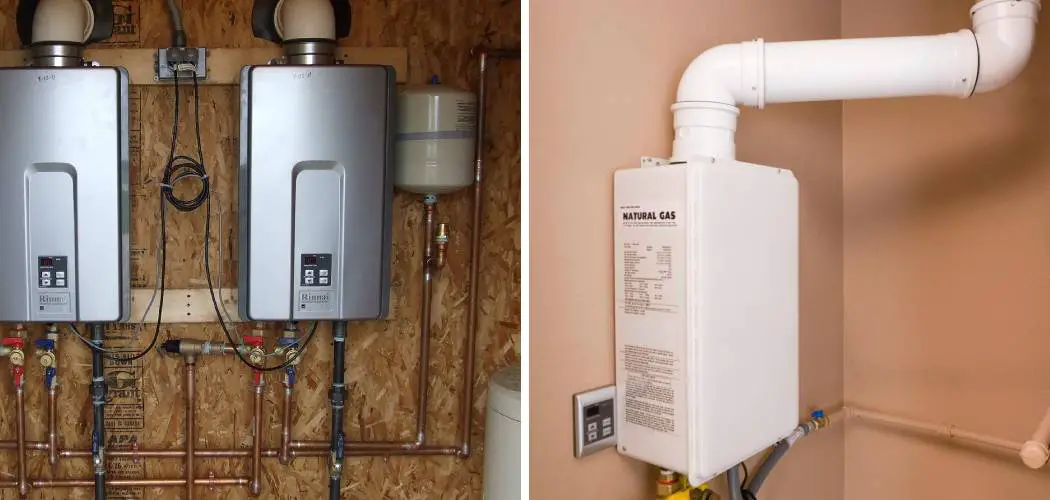Are you tired of dealing with a conventional water heater and all the hassles and expenses that come with it? If so, you may be interested in switching to a tankless water heater. Tankless water heaters are a great way to improve the energy efficiency, convenience, and cost-effectiveness of your home or business’s hot water supply.

In this blog post, we will explain why you should consider switching from an old-fashioned storage tank system to a more modernized tankless heating system and outline step-by-step instructions on how to convert to a tankless water heater. Read on for everything that you need to know about transitioning from a traditional setup to an economical tankless one!
10 Ways on How to Convert to a Tankless Water Heater
1 . Research & Choose the Tankless Water Heater That’s Right for You:
Before making the switch, it’s important to research which tankless water heater is best suited for your needs. Consider factors such as energy efficiency, size, and cost. So be aware of choosing the right one for your home or business. Choosing the right is key to getting the most out of your tankless water heater. Once you choose, you’ll be able to start the conversion process.
2. Prepare Your Home for Installation:
You’ll need to ensure that you have enough space for your new tankless water heater and that all necessary components are in place before installation begins. You should also ensure that anyone involved in the installation is familiar with the necessary safety procedures. Preparing your home for installation can help you avoid any potential problems. Before starting, make sure you have all the necessary tools.
3. Gather Materials:
After removing the old system, gather all the materials needed to install your new tankless water heater. This may include pipes, fittings, gas lines and electrical wires, hose clamps, insulation material, etc. Make sure you have everything you need before beginning the installation process. After gathering the necessary materials, you’re ready to begin the installation.
4. Turn Off the Power Supply & Shut off the Water:
Once you’re ready to install your new tankless water heater, make sure that you turn off the power supply and shut off the main water supply to your home or business as well.

This will help ensure that no one is injured during the installation and protect any electrical components from becoming damaged. You have to take this step and complete the same before starting installation to make sure safety for you and your home.
5. Detach Old Tankless Water Heater & Remove It:
Next, you’ll need to remove your old tankless water heater by disconnecting all of the associated pipes and wiring. Carefully take out the old unit and dispose of it properly. Once you remove the old tankless water heater, make sure that you clean up any debris or dust before installing your new unit. When detaching the old one, handle it carefully and take all necessary precautions. When you remove it carefully, you can install the new one quickly and properly.
6. Install Piping:
Once all your materials are gathered, install the piping for your tankless system. Depending on your chosen model, this might include copper pipes, PEX tubing, or stainless steel lines.

Each type of pipe requires different tools and techniques for proper installation, so make sure you read the instructions carefully. It’s essential to ensure all your connections are secure and leak-free. After installing the pipe, you will be able to attach the tankless water heater.
7. Install Accessories and Components:
An important part of installing a tankless water heater is making sure that all necessary components are installed properly. This includes things like pressure relief valves, drain valves, thermostats, expansion tanks, and more. Make sure everything is secure before continuing. Install accessories and components as per the instructions provided carefully.
8. Make Electrical Connections:
If your water heater is electric, you must ensure the wires and connections are properly installed before continuing. Read all instructions carefully so that you don’t end up with any surprises down the line. Be careful when dealing with electrical components, and only make connections that you’re sure about.

9. Test Your System:
Once everything is hooked up and ready to go, it’s time to test your tankless water heater. Make sure that it works properly and is providing hot water as expected.
If you are not getting hot water, double-check all the wiring and connections to ensure everything is in place. If you get anything in the wrong place, it will not work properly and will create problems for you. So test it properly before using it.
10. Clean Up:
Once you are satisfied with the performance of your new system, take some time to clean up the area around it. Cleaning up debris and dust can help ensure your system operates properly for years. Once everything is cleaned up, you’re ready to enjoy the benefits of a tankless water heater!
Congratulations on successfully converting to a tankless water heater! With a little patience and dedication, you are now reaping the benefits of an efficient and reliable system. Enjoy!
By following these ten steps, you can successfully install and convert to a tankless water heater with relative ease. Be sure to read all instructions carefully and take your time when making connections or attaching components. With proper installation and maintenance, your new tankless water heater should provide hot water for many years to come.
Frequently Asked Questions
How Much Money Need to Convert a Tankless Water Heater?
The cost to convert your existing water heater to a tankless system will depend on the type of installation you need, the size and number of units you require, and other factors. On average, you can expect to spend anywhere from $1,500 to $3,000 for a complete installation.
Do I Need Professional Help To Convert?
Converting to a tankless water heater is not a simple DIY project. It’s highly recommended that you hire a professional plumber or contractor to do the work for you in order to ensure it’s done safely and correctly. This will help protect your property from damage and also guarantee that you get the best results possible from your new tankless system.
Can I Convert to a Tankless Water Heater Myself?
It is not recommended that you try to convert your existing water heater to a tankless system yourself. This process involves dealing with electrical wiring, plumbing, and other components that require specialized tools and knowledge. It’s best to contact a professional who can handle all the details.

What Are The Benefits of Going Tankless?
The main benefit of switching to a tankless system is that it will save you money on water and energy costs in the long run. Additionally, tankless systems are more efficient than traditional tanks because they don’t store hot water and only heat water when it is needed.
This means you will always have access to hot water without worrying about running out. Tankless systems are also much more reliable than traditional tanks and require less maintenance over time.
Are Tankless Water Heaters Worth The Investment?
Yes, depending on your needs and budget, tankless water heaters can be worth the investment. They are more efficient than traditional tanks, require less maintenance, and can save you money in the long run.
If you’re considering switching to a tankless system, research all your options and find an experienced professional who can help with the installation. Making the switch to a tankless water heater can be a great decision for your home or business.
This might be the perfect solution if you’re looking for an efficient way to heat your water. Just remember to follow the steps outlined above and contact a professional to ensure everything goes as smoothly as possible.
Conclusion
Investing in a tankless water heater is often more cost-effective in the long run than a traditional tank-based heater, and it may end up saving you money and hassle. By converting to a tankless water heater, you can enjoy endless hot water, greater energy efficiency, and the added safety of never having to worry about overflowing.
With proper knowledge and guidance on how to convert to a tankless water heater, any homeowner can enjoy these benefits as well as increased comfort and convenience. So if your old tank-style water heater has been showing signs of trouble, now might be the time to consider making the switch to a tankless system – it could make all the difference in your home’s performance!

